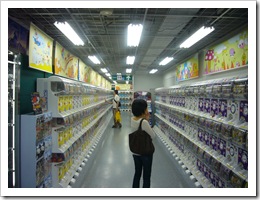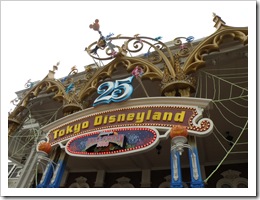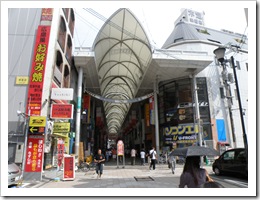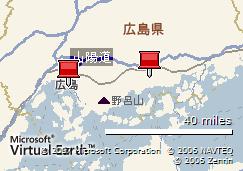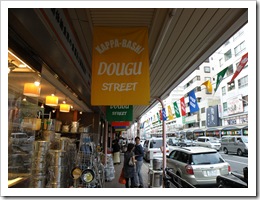 If you are a restaurant owner in Tokyo starting a new business, you are going to need lots of things like utensils, chairs, signs, menus and so many other things. Well, you can get all that and more at Kappabashi - the Kitchen Town which is basically a very long street close to Asakusa (浅草). With offerings very very diverse and culturally significant, the street has become a interesting visiting spot to not just restaurant owners but other curious visitors as well.
If you are a restaurant owner in Tokyo starting a new business, you are going to need lots of things like utensils, chairs, signs, menus and so many other things. Well, you can get all that and more at Kappabashi - the Kitchen Town which is basically a very long street close to Asakusa (浅草). With offerings very very diverse and culturally significant, the street has become a interesting visiting spot to not just restaurant owners but other curious visitors as well.
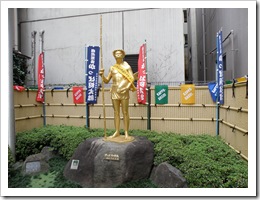 Now before I mention some of the interesting things I saw there, let me briefly talk about the name. See, "Bashi/橋" just stands for "place" but "Kappa/合羽" is the name of a mythical creature that is said to live in rivers. It looks like a cross between a man and a frog with a star shaped crown on its head which holds a plate full of water. It was believed to kidnap children playing in the water and its main weakness is losing all of its power if the plate dries off so he always makes sure to keep the plate full of water. It looks like recently they have been working on this "monster's" image though and now there are very friendly cartoons of it drawn on the posters around Kappabashi. Moreover, there is a statue of Kappa (that's where I took this picture) hidden in a small inlet around the middle of Kappabashi.
Now before I mention some of the interesting things I saw there, let me briefly talk about the name. See, "Bashi/橋" just stands for "place" but "Kappa/合羽" is the name of a mythical creature that is said to live in rivers. It looks like a cross between a man and a frog with a star shaped crown on its head which holds a plate full of water. It was believed to kidnap children playing in the water and its main weakness is losing all of its power if the plate dries off so he always makes sure to keep the plate full of water. It looks like recently they have been working on this "monster's" image though and now there are very friendly cartoons of it drawn on the posters around Kappabashi. Moreover, there is a statue of Kappa (that's where I took this picture) hidden in a small inlet around the middle of Kappabashi.
 Kappabashi is full of pots and pans of all prices as well as other usual suspects of restaurants all around the world but one can buy these things pretty cheaply here and some stores offer these not just in wholesale. The main stores of interest for me however were the ones selling plastic sample food (サンプル) that a lot of restaurants in Japan have right outside, kind of like a 3D menu. Some of these are very very detailed and their prices show that. A plastic sample of a hamburger with a "slice of tomato" and "lettuce", complete with "ketchup" and "mayo" sells for more than $100 easy. There is even sample food, usually not life-size, which can be used as a cellphone strap or fridge magnet. There was a fake scrambled egg badge even :P
Kappabashi is full of pots and pans of all prices as well as other usual suspects of restaurants all around the world but one can buy these things pretty cheaply here and some stores offer these not just in wholesale. The main stores of interest for me however were the ones selling plastic sample food (サンプル) that a lot of restaurants in Japan have right outside, kind of like a 3D menu. Some of these are very very detailed and their prices show that. A plastic sample of a hamburger with a "slice of tomato" and "lettuce", complete with "ketchup" and "mayo" sells for more than $100 easy. There is even sample food, usually not life-size, which can be used as a cellphone strap or fridge magnet. There was a fake scrambled egg badge even :P

